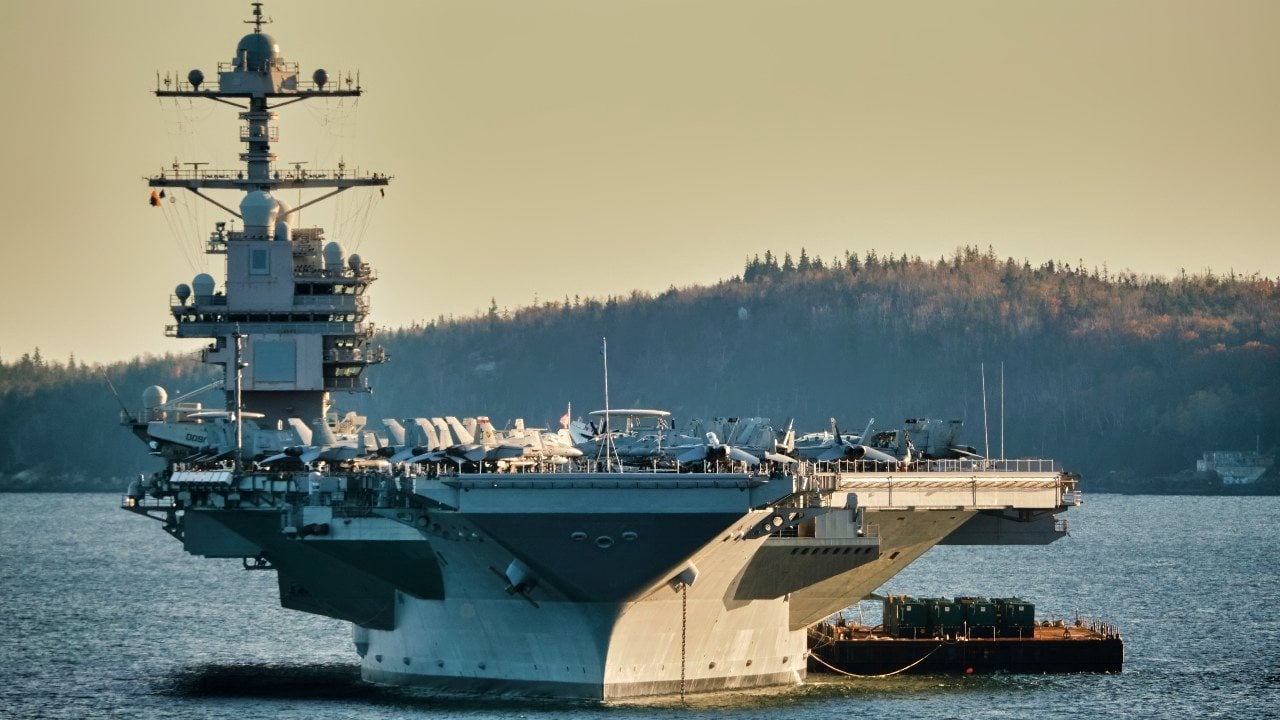5 Reasons Ford-Class Aircraft Carriers Make Russia 'Freak'
The U.S. Navy's Gerald R. Ford-class aircraft carriers represent the pinnacle of naval engineering, designed to replace the aging Enterprise and Nimitz-class carriers. With a staggering price tag of $13 billion per unit and a total program cost exceeding $120 billion, the Ford-class carriers are the most expensive warships ever built.
Summary and Key Points: The U.S. Navy's Gerald R. Ford-class aircraft carriers represent the pinnacle of naval engineering, designed to replace the aging Enterprise and Nimitz-class carriers. With a staggering price tag of $13 billion per unit and a total program cost exceeding $120 billion, the Ford-class carriers are the most expensive warships ever built.
-The program's cost, initially estimated at $77 billion, escalated due to the integration of cutting-edge technologies aimed at improving performance and reducing long-term operational costs.
-Notable features of the Ford-class include a 33% increase in Sortie Generation Rate (SGR) due to the new Electromagnetic Aircraft Launch System (EMALS) and Advanced Arresting Gear (AAG), a significant reduction in manpower requirements, and lower maintenance demands.
-These advancements ensure the Ford-class carriers will remain the most advanced and capable aircraft carriers for decades.
Gerald R. Ford-Class: The U.S. Navy's $120 Billion Marvel Explained
The US Navy is looking to the future, to potential open water conflict with China, and replacing the outdated Enterprise and Nimitz-class aircraft carriers. To replace the older carriers, the Navy has developed the most expensive warship ever built: The Gerald R. Ford-class. Each individual ship in the Ford class has a remarkable price tag: $13 billion per unit. But that’s nothing compared to the overall program cost; the program, which incorporates dozens of brand-new technology features, has cost over $120 billion.
The program cost was initially estimated to be about $77 billion – but obviously that didn’t stick; the price just kept going up. In theory, the Ford’s unprecedented sticker price will be an investment in exceptional performance and long-term cost cutting.
Let’s consider the Ford’s top five most notable features.
Sortie Generation Rate (SGR)
An aircraft carrier serves a pretty simple purpose: off-shore airpower projection. Essentially, an aircraft carrier is a floating, movable airfield that can be parked wherever, whenever. Accordingly, an aircraft carrier’s effectiveness relates to how many flights originate from the aircraft carrier. The Navy even has a metric to measure exactly how many flights are produced on their carriers: Sortie Generation Rate (SGR).
The Ford-class is expected to produce a 33 percent increase in SGR over the Nimitz-class; the Ford should produce 160 sorties per day (with the latent ability to hit 270 in wartime). The SGR increase is owed mostly to the Ford’s new launch and recovery technology, EMALS and AAG respectively.
Electromagnetic Aircraft Launch System (EMALS)
EMALS, or the Electromagnetic Aircraft Launch System, will replace the traditional steam piston catapult employed upon older aircraft carriers, including the Nimitz and Enterprise carriers. EMALS uses a linear induction motor – which uses electric currents to generate magnetic fields to glide an airframe along a track. The EMALS should accelerate aircraft more smoothly than steam catapults (which should put less wear and tear on the airframes).
Simultaneously, EMALS will cost less, weigh less, and require less maintenance. And as an added bonus: the move away from steam-powered pistons will reduce the Ford’s reliance on freshwater (which requires a pain-in-the-butt desalination process). The EMALS recharges more quickly than steam, so planes can be launched in quicker succession. Also, EMALS can be operated with more precise settings than steam, so the Ford can recalibrate to accommodate a wider variety of aircraft.
Advanced Arresting Gear System (AAG)
The AAG, or Advanced Arresting Gear System, will replace the MK7 hydraulic arresting gear on preceding aircraft carriers. The AAG was designed to accommodate a broader range of aircraft than the MK7, while requiring less manpower and maintenance.

The AAG uses rotary engines and simple, energy-absorbing water turbines paired with a large induction motor to provide fine control of the arresting forces. The new arresting gear is a somewhat subtle improvement, relative to the EMALS, but again, the upgrade will help the Ford boost its SGR.
Manpower Reduction
The older Nimitz-class carrier was a sophisticated, byzantine weapons system – requiring a full 5,000 sailors to operate. It was basically a floating city. Feeding, housing, and paying so many people is quite expensive. So, in an effort to reduce operating costs, the new Ford-class was designed to run with automated technologies in place of sailors (where possible).
The result is a significant reduction in personnel requirements; 1,100 fewer sailors will be needed to operate the Ford than the Nimitz. The 20 percent reduction in force should lead to long-term cost saving.
Maintenance Reduction
The Ford has been designed to require less maintenance than its predecessors. Accordingly, the reactors were designed with a simpler format. The radar systems were designed to be less temperamental. The EMALS and AAG were designed to require less maintenance than the preceding steam catapults and MK7 arresting gears.
In all, the Ford should require significantly less maintenance over the course of its 50-year service life. Estimates hold that the Ford will save $4 billion in service costs during its half century at sea.
While the Ford’s costs are monumental – the carrier will, without question, be the most sophisticated boat in the sea for decades to come.
About the Author
Harrison Kass is a prolific defense writer with over 1,000 articles published. An attorney, pilot, guitarist, and minor pro hockey player, he joined the US Air Force as a Pilot Trainee but was medically discharged. Harrison holds a BA from Lake Forest College, a JD from the University of Oregon, and an MA from New York University. He lives in Oregon and listens to Dokken. Follow him on Twitter @harrison_kass.
Image Credit: Creative Commons and/or Shutterstock.


